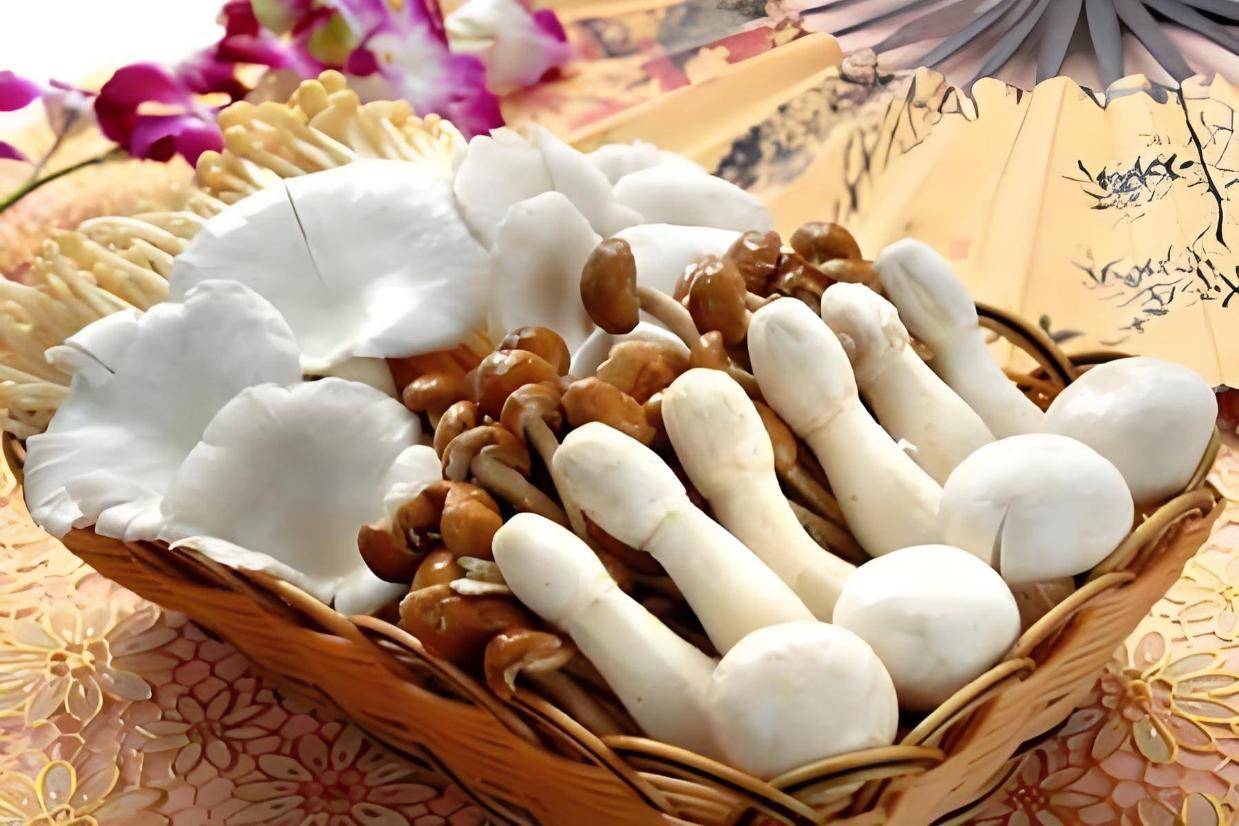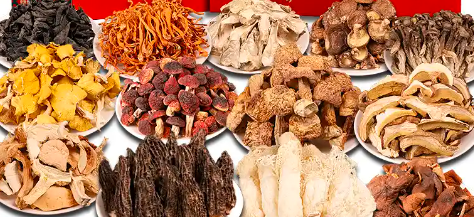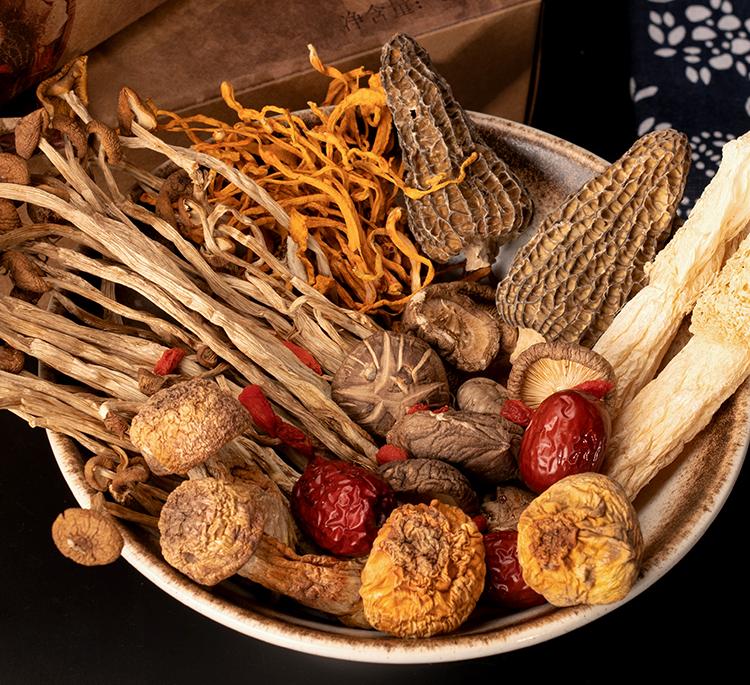
China’s Top 10 Edible Mushrooms: Abundance, Nutrition, and Economic Impact
2025-03-27 01:14China, the world’s largest producer and consumer of edible mushrooms, boasts a rich diversity of fungal resources. With over 1,000 cultivated species, Chinese farmers harvest over 40 million tons annually, contributing 70% of global production. These mushrooms are not only dietary staples but also economic powerhouses, valued at $120 billion USD in 2023. Below are 10 of China’s most common and high-yield edible mushrooms, celebrated for their flavors, health benefits, and cultural significance.
1. Shiitake (Lentinula edodes)
Production: 14 million tons/year (40% of global output).
Key Traits:
Nicknamed the "king of mushrooms," shiitake thrives on decaying logs.
Rich in vitamin D, zinc, and polysaccharides that boost immunity.
Traditional uses: Fermented in soy sauce, soups, and medicinal broths.
Economic Role: China exports $3 billion worth yearly, dominating markets in Japan and Europe.

2. Oyster Mushroom (Pleurotus spp.)
Production: 12 million tons/year.
Key Traits:
Fast-growing on straw or agricultural waste.
Contains ergothioneine, an antioxidant linked to anti-aging.
Versatile in cooking: Stir-fries, curries, and vegan "pulled pork" substitutes.
Innovation: China leads in factory farming, producing 80% of global oyster mushrooms.
3. Enoki (Flammulina velutipes)
Production: 3.5 million tons/year.
Key Traits:
Slender, white stems with small caps; thrives in cold climates.
High in niacin (B3) and collagen-boosting compounds.
Iconic in Korean bibimbap and Japanese hot pots.
Export: 60% of the world’s enoki mushrooms come from China.

4. Tremella (Tremella fuciformis)
Production: 2.8 million tons/year.
Key Traits:
Translucent, jelly-like texture; called "snow fungus" in Chinese cuisine.
Rich in polysaccharides that improve skin health and digestion.
Used in desserts like tremella pudding and herbal tonics.
5. Ganoderma (Reishi)
Production: 1.2 million tons/year.
Key Traits:
Known as the "mushroom of immortality" in traditional medicine.
Contains triterpenes that reduce inflammation and support liver health.
Sold as powders, teas, and supplements globally.
6. Puffball Mushroom (Calvatia gigantea)
Production: 900,000 tons/year.
Key Traits:
Large, round fruiting bodies; harvested before spores mature.
Mild flavor and meaty texture; ideal for stuffing or frying.
Regional Specialty: A staple in Yunnan’s wild mushroom markets.

7. Wood Ear (Auricularia spp.)
Production: 850,000 tons/year.
Key Traits:
Black, ear-shaped fungi with crunchy texture.
High in iron and dietary fiber, aiding blood circulation.
Culinary Use: Stir-fried with garlic or added to hot and sour soup.
8. Morel (Morchella spp.)
Production: 500,000 tons/year.
Key Traits:
Prized for its honeycomb-like appearance and nutty flavor.
Contains organic germanium, a rare antioxidant.
Export Value: China exports $200 million worth annually, primarily to Europe.
9. Shiitake (Cultivated Varieties)
Production: 14 million tons/year (40% of global output).
Key Traits:
Nicknamed the "king of mushrooms," shiitake thrives on decaying logs.
Rich in vitamin D, zinc, and polysaccharides that boost immunity.
Traditional uses: Fermented in soy sauce, soups, and medicinal broths.
Economic Role: China exports $3 billion worth yearly, dominating markets in Japan and Europe.
10. Lion’s Mane (Hericium erinaceus)
Production: 300,000 tons/year.
Key Traits:
White, shaggy fruiting body resembling a lion’s mane.
Contains hericenones, compounds linked to nerve regeneration.
Health Trend: Marketed as a nootropic supplement for cognitive health.
China’s Mushroom Industry: Innovations and Challenges
Technology-Driven Farming:
Automated indoor farms use LED lighting and IoT sensors to optimize growth.
Lab-cultured varieties (e.g., Cordyceps militaris) reduce reliance on wild harvesting.
Deep-Processing Products:
Mushroom-based snacks, functional beverages, and plant-based meats are booming.
Export revenue from processed goods surged by 18% in 2023.
Sustainability Concerns:
Overharvesting of wild species like morchella threatens biodiversity.
Government initiatives promote eco-friendly practices and certification programs.
Cultural Significance
Mushrooms hold a revered place in Chinese culture:
Medicine: The Compendium of Materia Medica lists 120 medicinal fungi.
Symbolism: Shapes like the lingzhi (reishi) represent longevity and prosperity.
Cuisine: Dishes like ants climbing trees (glass noodles with enoki) blend mushrooms with regional flavors.
Future Outlook
By 2030, China aims to increase mushroom production to 50 million tons/year, driven by:
R&D: CRISPR-edited fungi with enhanced nutrients.
Global Markets: Targeting health-conscious consumers in North America and Southeast Asia.
Rural Development: Mushroom farming employs over 30 million people, reducing poverty in mountainous regions.

Conclusion
From humble shiitake to futuristic lab-grown varieties, China’s edible mushroom industry is a testament to tradition meeting innovation. With unparalleled biodiversity and cutting-edge technology, these fungi are not just food—they’re a cornerstone of China’s agricultural legacy and global health economy.
Scan the QR code to explore Dashanhe Group’s premium mushroom products!

